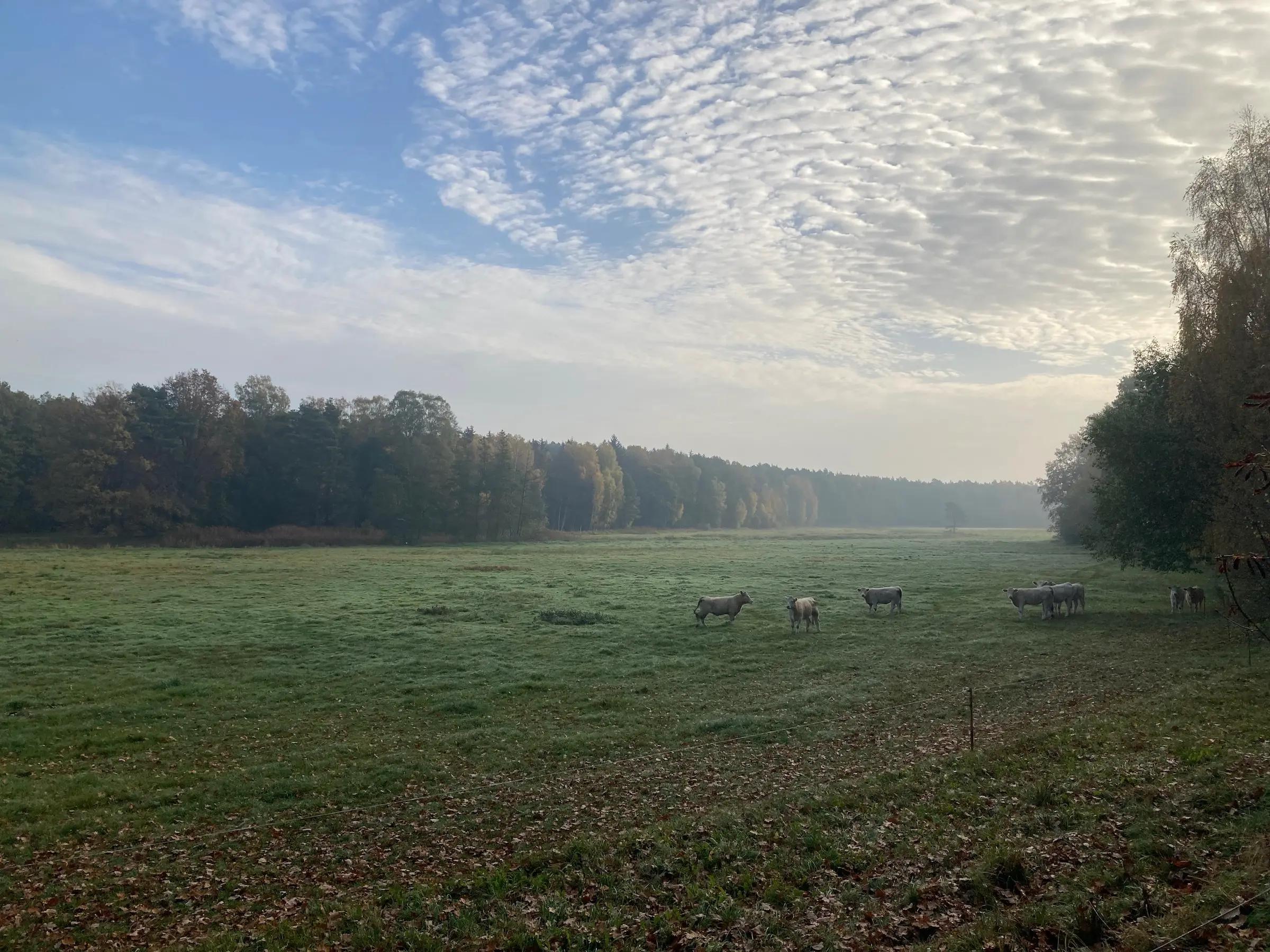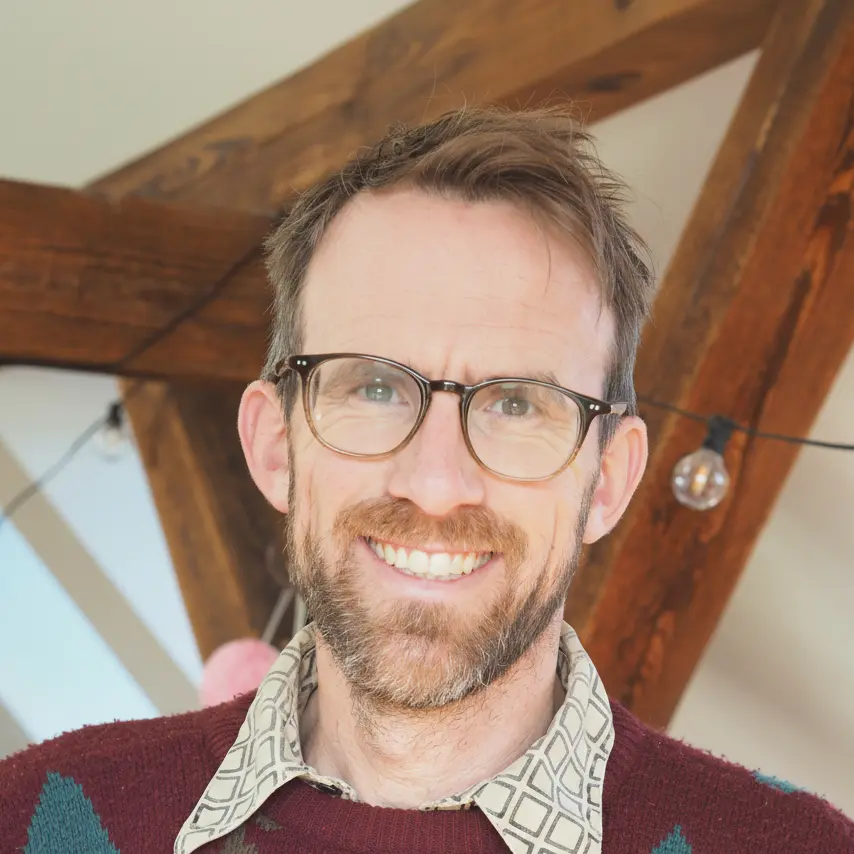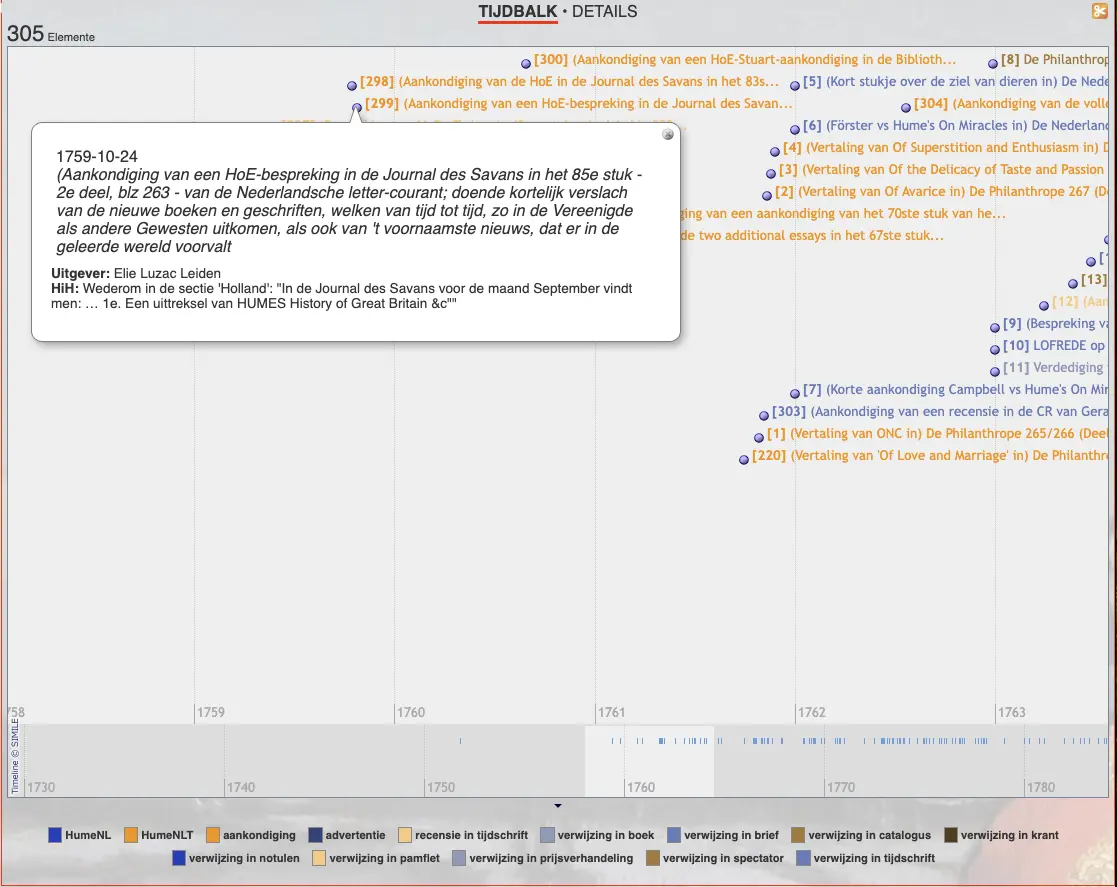https://archief.somtijds.nl/hume-timeline
About the Project
To support the research for my MA thesis, I used two separate web-based tools: a blog and an interactive timeline. While the blog was mostly a way to keep track of loose thoughts and notes, the interactive timeline provided a unique way to present and explore a huge collection of sources. I found over 250 primary sources that mentioned David Hume or his works, scattered across libraries and various digital repositories.
I have recently spent some time to bring the timeline back online after the Google API used to create a JSON feed of the underlying data had been deprecated years earlier. That means that the timeline is navigable once again, but many of the embedded sources are not yet properly displayed. I hope to be able to restore these later – and possibly see if I can build a new-and-improved version.
A note about the digital sources used in the project
Two of the three most important resources for my research were digital archives, providing nearly 80% of my primary sources:
- Google Books (146)
In the early 2000s, discovering Google Books as a history student is maybe comparable to anyone’s first interaction with ChatGPT. Controversial as it may be, Google’s massive online digital library still is a formidable resource. The history of its rise and fall as a ‘collection’ (or the world’s most ambitious digitization project ever to be conceived) is worth revisiting, especially in light of the controversy around the covert training operations used by the AI companies responsible for large foundational models. - Vaderlandsche Letteroefeningen in e-Laborate (47)
e-Laborate was a digital resource created by the Huygens Institute, now offline, see also: https://adcs.home.xs4all.nl/varia/vl/index.html - OTM, or Oude Turfmarkt (36)
This is the main library building of the University of Amsterdam at the time, where I dug through a large number of eighteenth-century publications.


